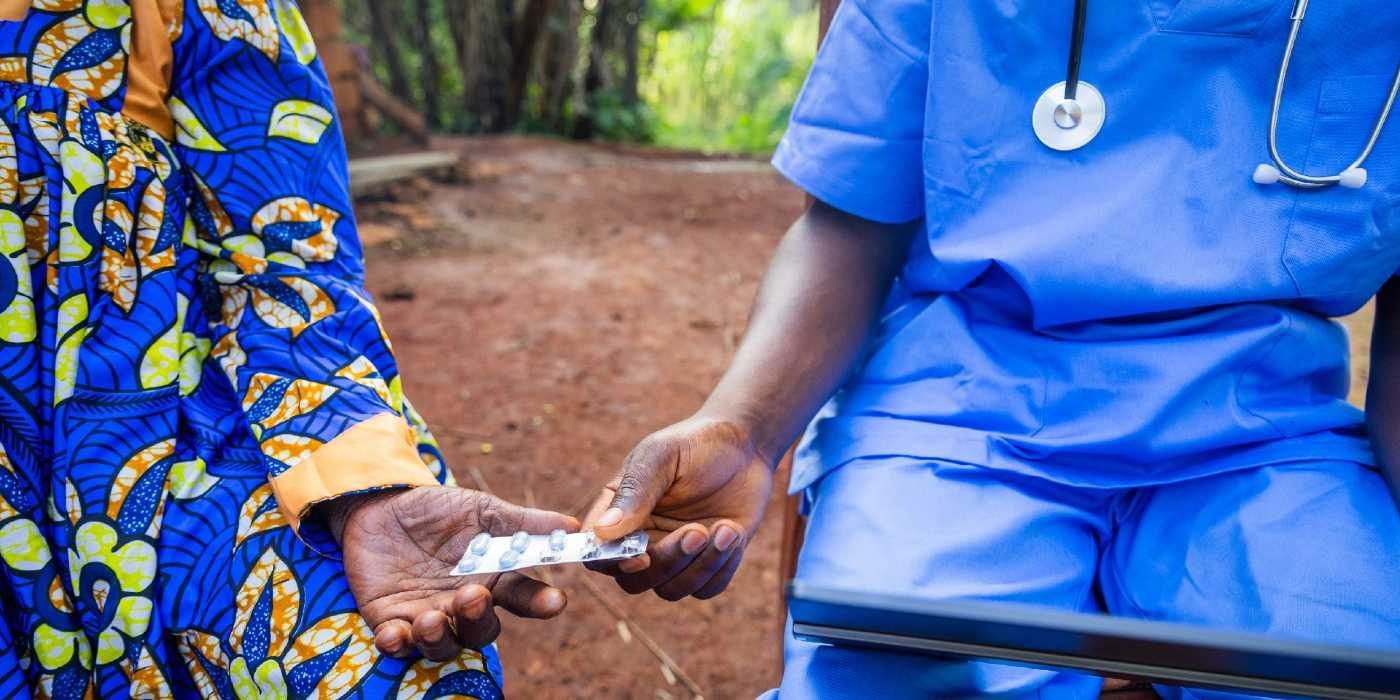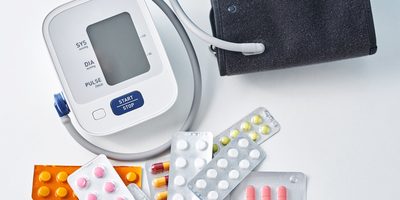
Novel low-dose 3-in-1 blood pressure pill significantly outperforms standard care, study shows
Over 80% of patients achieved control within a month, sustained at six months
New research shows that a treatment plan based on novel combination of low doses of three anti-hypertensive drugs in a single pill - known as GMRx2 - was superior to a high-quality standard care treatment plan at lowering blood pressure in patients with uncontrolled hypertension.1
Results of the ‘deliVERy of Optimal blood pressure coNtrol in afrICA (VERONICA)-Nigeria’ trial, led by The George Institute for Global Health, were presented today at the European Society of Cardiology Congress 2024 and simultaneously published in the Journal of the American Medical Association (JAMA).
The GMRx2 treatment plan involved a once daily pill containing telmisartan, amlodipine and indapamide at a quarter, half or standard doses. The standard care treatment plan recommended by the Nigerian Ministry of Health began with monotherapy, followed by dual and triple combination therapy, and was typical of hypertension guidelines for many countries.2
After 6 months treatment, home systolic blood pressure was 31mmHg lower in the GMRx2 group compared to 26 mmHg lower with standard care – the 5.8 mmHg difference was highly clinically and statistically significant. Existing evidence shows that with every 5 mmHg reduction in systolic blood pressure, there is a 10% reduction in major cardiovascular events such as stroke, heart attack and heart failure.3
After just one month, 81% of participants in the GMRx2 group achieved clinic-measured blood pressure control versus 55% with standard care. This improvement was sustained at six months with 82% achieving control, compared with 72% under standard care. Tolerability of both treatment plans was good, with no withdrawals due to adverse events.
Prof Dike Ojji, Head of the Cardiovascular Research Unit at the University of Abuja, Nigeria and study principal investigator said, “The triple pill still produced clinically meaningful reductions in blood pressure compared to standard care, even when standard care closely followed current guidelines and involved more clinic visits.”
“In low-income countries fewer than one in four treated people achieve blood pressure control and in high-income settings it is only between 50% and 70%,” added Prof Ojji, “so to see rates of over 80% in just one month is impressive.”
It is estimated that over a billion adults live with hypertension worldwide, with two-thirds living in low- and middle-income countries.4 High blood pressure is the leading risk factor for mortality, accounting for 10.8 million deaths a year.4,5 It is hoped this new treatment could have a big impact on reducing rates of cardiovascular disease, particularly in countries with the highest burden.
GMRx2 is the leading drug candidate of George Medicines, a late-stage, biopharmaceutical company addressing significant unmet need in the treatment of cardiometabolic disease, established to commercialise the research of The George Institute for Global Health. Earlier this month, GMRx2 was submitted to the US Food and Drug Administration (FDA) for the treatment of hypertension.
Phase III data from two additional GMRx2 trials were also presented at the congress, showing good tolerability and clinically relevant blood pressure reductions compared to placebo and dual combination therapy.6,7
Prof Anthony Rodgers, Senior Professorial Fellow at The George Institute and Chief Medical Officer at George Medicines said, “Our mission is to develop sustainable solutions that can improve the health of millions of people worldwide and alleviate strain on health systems. There is a global goal to reach 80% blood pressure control among those treated, but no country has yet achieved this. With the VERONICA trial, we’ve shown the potential of this novel strategy to reach this ambitious target.”
“There has been little innovation in this field, so it’s rewarding to see many years of research by The George Institute culminate in a novel treatment using established medicines to address an unmet need,” he added.
The VERONICA trial is funded by the Australian National Health and Medical Research Council.
References
- Ojji DB, Salam A et al. Comparison of Low-Dose Triple Pill and Standard Care Protocols for Hypertension Treatment in Black Africans in Nigeria: A Randomised Clinical Trial. JAMA. 2024. https://doi.org/10.1001/jama.2024.18080
- Rodgers A, Salam A, et al. Rationale for a New Low-Dose Triple Single Pill Combination for the Treatment of Hypertension. Global Heart. 2024. https://doi.org/10.5334/gh.1283
- The Blood Pressure Lowering Treatment Triallists’ Collaboration. Pharmacological blood pressure lowering for primary and secondary prevention of cardiovascular disease across different levels of blood pressure: an individual participant-level data meta-analysis. The Lancet. 2021. https://doi.org/10.1016/S0140-6736(21)00590-0
- World Health Organization. Hypertension. 2023. Accessed August 2024. https://www.who.int/news-room/fact-sheets/detail/hypertension
- GBD 2019 Risk Factors Collaborators. Global burden of 87 risk factors in 204 countries and territories, 1990–2019: a systematic analysis for the Global Burden of Disease Study 2019. The Lancet. 2020. https://doi.org/10.1016/S0140-6736(20)30752-2
- Rodgers A, Salam A et al. Triple single pill combination of telmisartan/amlodipine/indapamide vs placebo for hypertension. JACC. 2024. https://doi.org/10.1016/j.jacc.2024.08.025
- Rodgers A, Salam A et al. Triple single pill combination of telmisartan/amlodipine/indapamide vs dual combinations for hypertension. (In Press) 2024.



